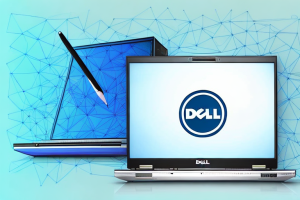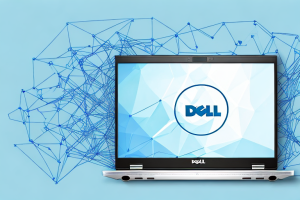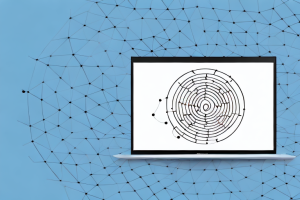How to upgrade the storage on a Dell OptiPlex 7060
8 min read
A dell optiplex 7060 computer with an open case
If you’re finding that your Dell OptiPlex 7060 is running out of hard drive space and you need more storage, it’s time to upgrade. Upgrading the storage on your Dell OptiPlex 7060 is an excellent way to breathe some new life into your computer, and it’s an easy upgrade to do yourself. In this article, we’ll walk you through the process of upgrading the storage on your Dell OptiPlex 7060 in a step-by-step manner, covering all the necessary points in exhaustive detail. Whether you’re a seasoned computer user or a complete beginner, you’ll be able to follow along with ease.
Understanding the Dell OptiPlex 7060 storage options
The Dell OptiPlex 7060 has a variety of hard drive options available depending on the model you have. The most common types of storage available are hard disk drives (HDD) and solid-state drives (SSD). The HDD is a traditional spinning hard drive with a mechanical arm that reads and writes data to the platters, while the SSD does not have any moving parts and uses flash memory to store data. The SSD is significantly faster than the HDD and is the preferred storage type for most users.
In addition to HDD and SSD options, the Dell OptiPlex 7060 also offers hybrid storage options. Hybrid drives combine the speed of an SSD with the storage capacity of an HDD. They have a small amount of flash memory that acts as a cache, which allows frequently accessed data to be stored and accessed quickly. This makes them a good option for users who need both speed and storage capacity.
Another storage option available for the Dell OptiPlex 7060 is the M.2 solid-state drive. M.2 drives are smaller and faster than traditional SSDs, and they connect directly to the motherboard of the computer. They are often used in laptops and other small form factor devices, but they can also be used in desktop computers like the OptiPlex 7060. M.2 drives are a good option for users who need fast storage in a small form factor.
Benefits of upgrading your Dell OptiPlex 7060 storage
Upgrading your Dell OptiPlex 7060 storage provides several benefits. In addition to the obvious benefit of more storage space, upgrading to an SSD will make your computer much faster. You’ll experience improved boot times, faster application loading times, and snappier overall performance. Additionally, upgrading your storage is an inexpensive way to extend the life of your computer instead of having to buy a new one.
Another benefit of upgrading your Dell OptiPlex 7060 storage is that it can help you to better organize your files and folders. With more storage space, you can create more folders and subfolders to keep your files organized and easily accessible. This can save you time and frustration when searching for specific files or documents.
Furthermore, upgrading your storage can also improve your computer’s multitasking capabilities. With more storage space, you can run multiple applications simultaneously without experiencing any lag or slowdowns. This can be especially beneficial for professionals who need to run multiple programs at once, such as graphic designers or video editors.
What you need to know before upgrading your Dell OptiPlex 7060 storage
Before you begin, it’s essential to understand several things. Firstly, you need to ensure you have a backup of all your data because upgrading your storage involves wiping your existing data to install the new drive. Secondly, you’ll need to understand how to physically install and connect your new hard drive. Finally, you’ll need to purchase the right type of hard drive for your Dell OptiPlex 7060, either an HDD or SSD, depending on your needs and budget.
Another important consideration is the size of the hard drive you want to install. The Dell OptiPlex 7060 has limited space for additional storage, so you’ll need to choose a drive that fits within the available space. You can check the specifications of your computer to determine the maximum size of the hard drive that can be installed.
Additionally, it’s important to note that upgrading your storage may void your warranty. If your computer is still under warranty, it’s best to check with Dell before making any changes to your hardware. They may be able to provide guidance or even perform the upgrade for you.
Steps to upgrade your Dell OptiPlex 7060 storage
The actual process of upgrading your storage is relatively simple. Follow these steps:
- Back up all your data.
- Open the case of your computer and locate the old drive.
- Unscrew the old drive and remove it from the computer.
- Insert the new drive into the computer and screw it in place.
- Reconnect the data and power cables to the new drive.
- Close the case of your computer and power it on.
- Install your operating system on the new drive as directed.
- Restore your backed-up data onto the new drive.
It is important to note that before purchasing a new drive, you should check the specifications of your Dell OptiPlex 7060 to ensure that the new drive is compatible with your computer. Additionally, if you are not comfortable with opening up your computer and performing the upgrade yourself, it is recommended that you seek the assistance of a professional to avoid any potential damage to your computer.
Choosing the right type of hard drive for your Dell OptiPlex 7060
When upgrading your storage, you’ll need to decide between an HDD and an SSD. The SSD is the superior choice as it’s faster and more reliable than an HDD. The only downside of an SSD is it’s more expensive than an HDD. If budget constraints prevent you from purchasing an SSD, an HDD is still a good option as it’ll provide additional storage space at a lower cost.
It’s important to note that the type of hard drive you choose can also affect the overall performance of your Dell OptiPlex 7060. If you’re using your computer for tasks that require a lot of data transfer, such as video editing or gaming, an SSD is highly recommended. However, if you’re using your computer for basic tasks such as web browsing and word processing, an HDD should suffice. Ultimately, the decision between an SSD and an HDD will depend on your specific needs and budget.
Understanding RAID configurations for your upgraded Dell OptiPlex 7060 storage
RAID (redundant array of independent disks) is a storage technology that combines multiple hard drives into a single logical unit for improved performance, data redundancy, or both. If you want to set up a RAID configuration with your upgraded storage, you’ll need to ensure the type of RAID you choose can be supported by your Dell OptiPlex 7060’s motherboard. Some models only support specific RAID types.
There are several types of RAID configurations available, including RAID 0, RAID 1, RAID 5, and RAID 10. RAID 0 offers improved performance by striping data across multiple disks, but does not provide any redundancy. RAID 1, on the other hand, mirrors data across multiple disks for improved data redundancy, but does not offer any performance benefits. RAID 5 combines striping and parity data across multiple disks for both improved performance and data redundancy. RAID 10, also known as RAID 1+0, combines mirroring and striping for the best of both worlds, offering both improved performance and data redundancy.
How to clone your data from the old drive to the new one on Dell OptiPlex 7060
If you want to transfer your existing data from your old hard drive to your new one, cloning your data is an excellent option. You can use third-party software, such as EaseUS Todo Backup or Acronis True Image, to create a complete image of your drive and transfer it to the new drive. This method is much faster than manually transferring your data and ensures you don’t lose any data in the process.
Before you start the cloning process, make sure you have enough space on the new drive to accommodate all the data from the old drive. It’s also important to note that cloning your drive will create an exact copy of your old drive, including any errors or viruses that may be present. Therefore, it’s recommended to run a virus scan and fix any errors on your old drive before starting the cloning process.
Once you have checked for errors and viruses, you can proceed with the cloning process. Connect both the old and new drives to your Dell OptiPlex 7060 and launch the cloning software. Follow the instructions provided by the software to create a complete image of your old drive and transfer it to the new drive. Once the cloning process is complete, you can disconnect the old drive and start using your new drive with all your data intact.
Troubleshooting common upgrade issues with Dell OptiPlex 7060 storage
As with any computer upgrade, there are several common issues that you may encounter during the process. For example, you may experience issues with the BIOS recognizing your new hard drive. Or you may have difficulty booting your computer after upgrading. However, most issues can be resolved by ensuring you have the latest BIOS firmware installed, ensuring your data and power cables are correctly connected, and verifying your computer settings. If you’re unsure how to resolve any issues, consulting an expert or contacting customer support can help you resolve the problem quickly.
Another common issue that may arise during an upgrade is compatibility issues with your operating system. It’s important to ensure that your operating system is compatible with the new storage device you’re installing. You can check the manufacturer’s website for compatibility information or consult with an expert.
In addition, you may encounter issues with the physical installation of the new storage device. It’s important to follow the manufacturer’s instructions carefully and ensure that the device is securely and correctly installed. If you’re unsure about the installation process, consulting an expert or contacting customer support can help you avoid any potential issues.
Tips for maintaining and optimizing your upgraded Dell OptiPlex 7060 storage
Once you’ve upgraded your storage, several things can help you maintain and optimize your new hard drive. Firstly, ensure you keep your operating system and system drivers up to date to avoid any conflicts or issues. Secondly, avoid overfilling your hard drive, as this can impact performance and slow down your computer. Finally, regular backups will protect your data and ensure you don’t lose anything if your hard drive fails.
Upgrading your storage on your Dell OptiPlex 7060 is an excellent way to improve your computer’s performance, increase storage space, and extend the life of your computer. By following the steps outlined in this article and understanding the key considerations for upgrading, you can enjoy the benefits of upgrading your storage without any hiccups. With a little technical know-how and a little effort, you can upgrade the storage on your Dell OptiPlex 7060 and enjoy a faster, more efficient computer experience.
It’s important to note that upgrading your storage may void your warranty, so be sure to check with Dell before making any changes. Additionally, if you’re not comfortable with opening up your computer and installing new hardware, it’s best to seek the help of a professional to avoid any damage to your computer. With the right precautions and knowledge, upgrading your storage can be a simple and effective way to improve your computer’s performance and extend its lifespan.


